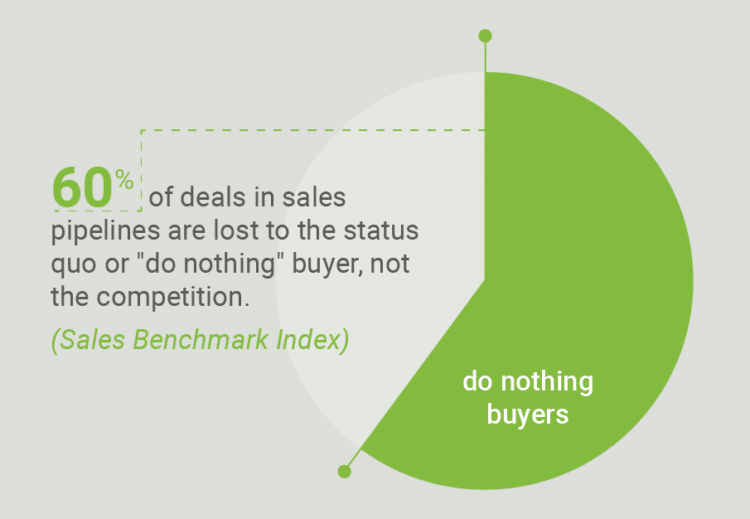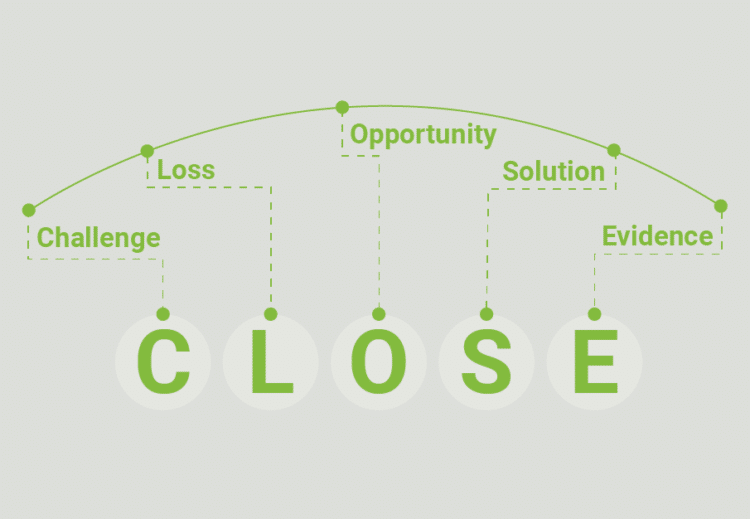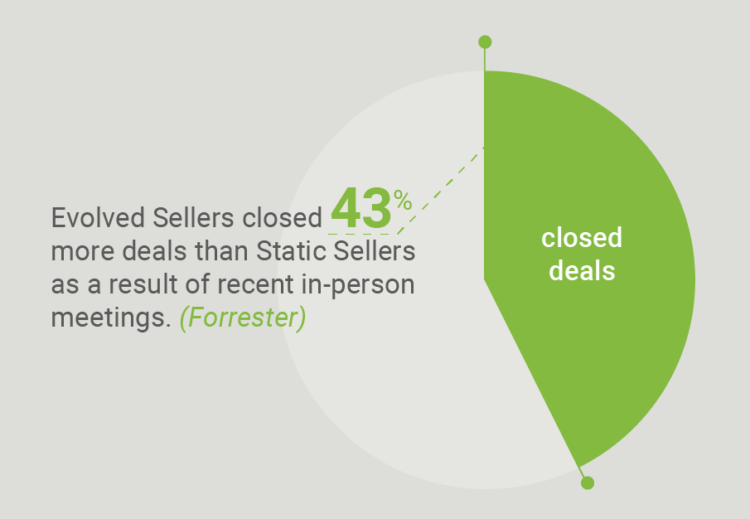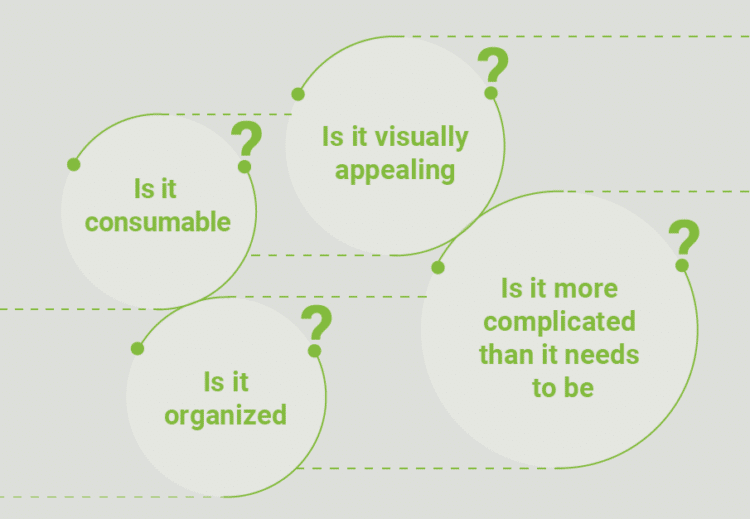You’ve seen this story unfold.
It starts with a frustrated buyer, buried under mountains of content that they spend two-thirds of their time gathering, processing, and de-conflicting, trying to recognize some semblance of their own unique business problems. Then, said buyer sets out to build a financially-justified case for a technology investment and present it to a growing number of stakeholders (increasingly skeptical stakeholders, might I add). The ending is predictable, given the circumstances; buyers don’t choose you or your competitor at the end of this story. They often throw their hands up and do nothing.

Same Old Sales Story, Same Results
Let’s look at what your sellers are probably already doing. Likely, they have access to a high volume of content, have already developed sales decks, and have considerably useful data captured in a spreadsheet format. They are likely prepared for one sales meeting, but are they prepared for any meeting? More importantly, are they prepared to discuss what the customer wants to discuss? Getting your deals to actually move toward “close” requires the right methodology and the right content.
The CLOSE Conversation Guide is a storytelling framework to help you improve your value articulation and sales effectiveness. CLOSE puts your prospect at the heart of the story. And like any good story, it doesn’t jump right to the “happily ever after.” Instead, it removes the focus from what benefits you can provide first, and sets the stage for the buyer’s challenges and the pain they are experiencing. Pain before gain.
The 5 key elements of CLOSE storytelling are:

Loss: What are the challenges currently costing, if not addressed?
Opportunity: What is the value of addressing the challenge?
Solution: What product or service can deliver these business benefits?
Evidence: How can I be assured that the proposed solution can deliver?
According to Forrester, only 10% of buyers report that sales reps are value-focused, with most still using the less-than-effective “product pitch”. Rewriting your sales story means adjusting the dialogue from a product pitch to a value-based selling experience, and thoughtfully, prescriptively bringing the customer in as a collaborator, rather than a spectator.
Change the Conversation, Shorten the Sales Cycle, Convert Prospects to Customers with Value Selling
The number one reason for revenue shortfalls is not a lack of leads, sales training or product mix – but the inability for sales and marketing to effectively communicate the value of their solutions to prospects (SiriusDecisions). When sellers are enabled with the right tools and insights, they can focus on the buyer’s challenges and how they can uniquely solve their issues. It’s not about how your company and your solutions can save the day; it’s about making your prospect the hero in overcoming their challenges.


It’s time to get started. Contact us to tackle your content, sales, and measurement challenges head-on and transform your sales approach from pitching products to value selling.

Comments are closed.